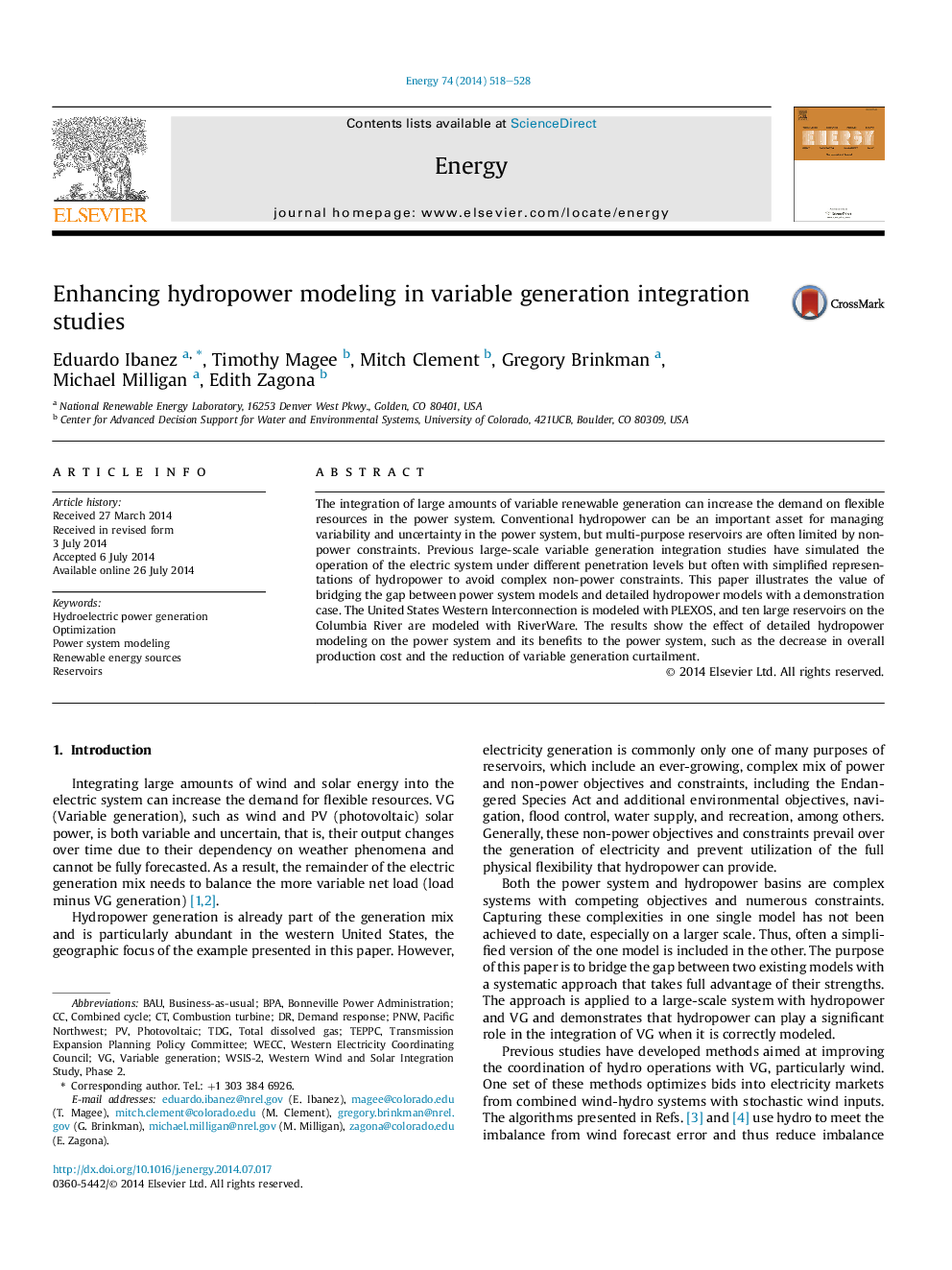| Article ID | Journal | Published Year | Pages | File Type |
|---|---|---|---|---|
| 1732487 | Energy | 2014 | 11 Pages |
•Hydropower is an existing source of flexibility in the power system.•Modeling of hydro is simplified in large-scale variable generation integration studies.•An iterative method to couple a hydro and an electricity model is presented.•Production cost and renewable curtailment are reduced with better hydro models.
The integration of large amounts of variable renewable generation can increase the demand on flexible resources in the power system. Conventional hydropower can be an important asset for managing variability and uncertainty in the power system, but multi-purpose reservoirs are often limited by non-power constraints. Previous large-scale variable generation integration studies have simulated the operation of the electric system under different penetration levels but often with simplified representations of hydropower to avoid complex non-power constraints. This paper illustrates the value of bridging the gap between power system models and detailed hydropower models with a demonstration case. The United States Western Interconnection is modeled with PLEXOS, and ten large reservoirs on the Columbia River are modeled with RiverWare. The results show the effect of detailed hydropower modeling on the power system and its benefits to the power system, such as the decrease in overall production cost and the reduction of variable generation curtailment.
